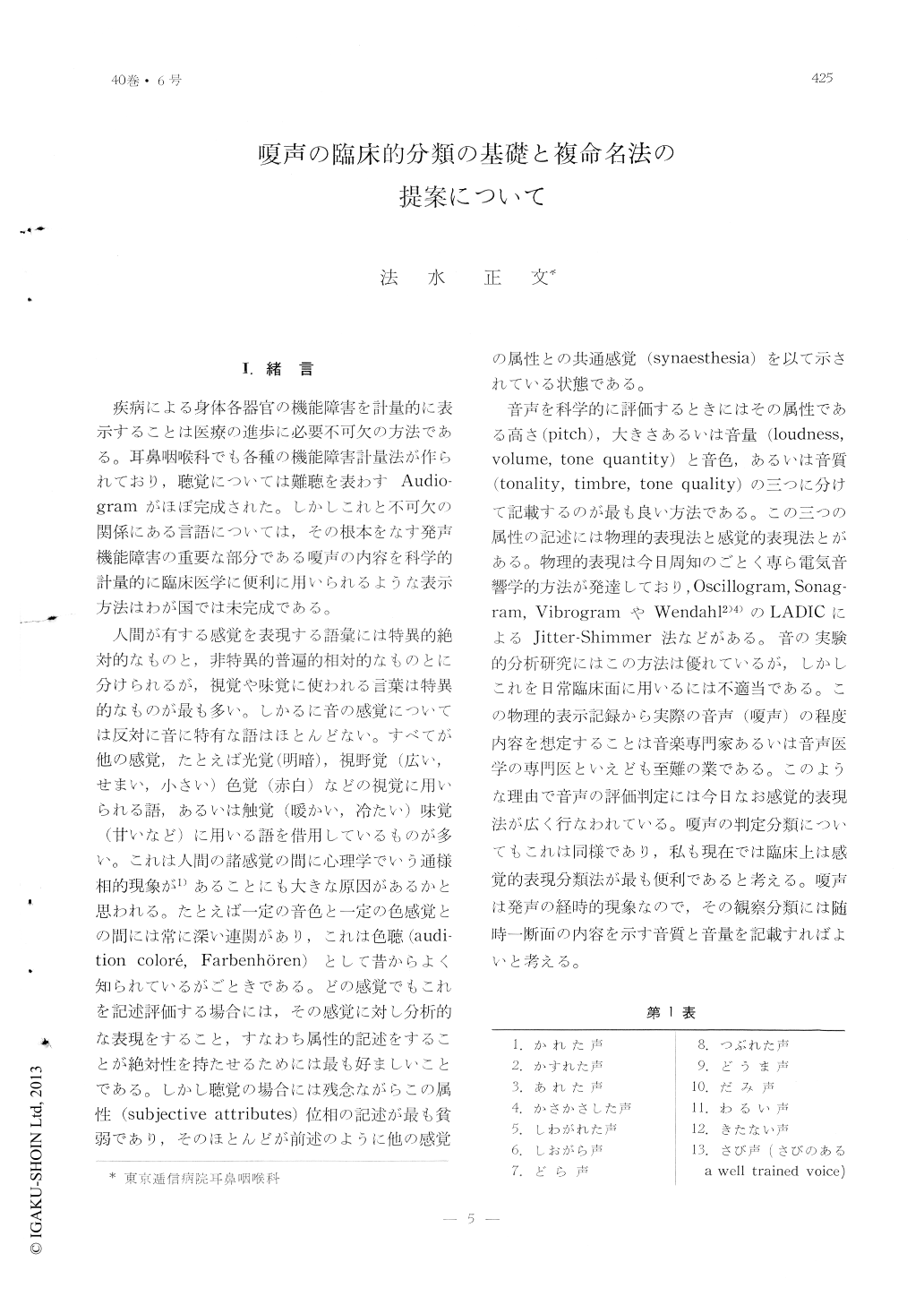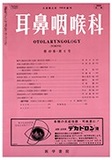Japanese
English
- 有料閲覧
- Abstract 文献概要
- 1ページ目 Look Inside
Ⅰ.緒言
疾病による身体各器官の機能障害を計量的に表示することは医療の進歩に必要不可欠の方法である。耳鼻咽喉科でも各種の機能障害計量法が作られており,聴覚については難聴を表わすAudiogramがほぼ完成された。しかしこれと不可欠の関係にある言語については,その根本をなす発声機能障害の重要な部分である嗄声の内容を科学的計量的に臨床医学に便利に用いられるような表示方法はわが国では未完成である。
人間が有する感覚を表現する語彙には特異的絶対的なものと,非特異的普遍的相対的なものとに分けられるが,視覚や味覚に使われる言葉は特異的なものが最も多い。しかるに音の感覚については反対に音に特有な語はほとんどない。すべてが他の感覚,たとえば光覚(明暗),視野覚(広い,せまい,小さい)色覚(赤白)などの視覚に用いられる語,あるいは触覚(暖かい,冷たい)味覚(甘いなど)に用いる語を借用しているものが多い。これは人間の諸感覚の間に心理学でいう通様相的現象が1)あることにも大きな原因があるかと思われる。たとえば一定の音色と一淀の色感覚との間には常に深い連関があり,これは色聴(audition coloré,Farbenhören)として昔からよく知られているがごときである。どの感覚でもこれを記述評価する場合には,その感覚に対し分析的な表現をすること,すなわち属性的記述をすることが絶対性を持たせるためには最も好ましいことである。しかし聴覚の場合には残念ながらこの属性(subjective attributes)位相の記述が最も貧弱であり,そのほとんどが前述のように他の感覚の属性との共通感覚(synaesthesia)を以て示されている状態である。
In order to reach a basic and scientific classification of hoarseness that might be used as an aid to clinical treatments, the author advocates the introduction of binominal nomenclature representing both, the quantitative and qualitative aspects of the hoarseness and voice timbre respectively.
The quantitative aspect is divided into 5 gradations, N (seminormal voice) at one end and A (breathy or aphonic voice) on the other with H-1-2 and-3 (light-, medium- and severe-hoarseness) lying in between the two extremes.
The qualitative aspect is shown by selecting 3 sets of words from the Sonar sound vocabulary which are rough-relative smooth, heavy-light and laboured-easy.
Vocabularies on hoarseness in several languages are also presented.

Copyright © 1968, Igaku-Shoin Ltd. All rights reserved.


